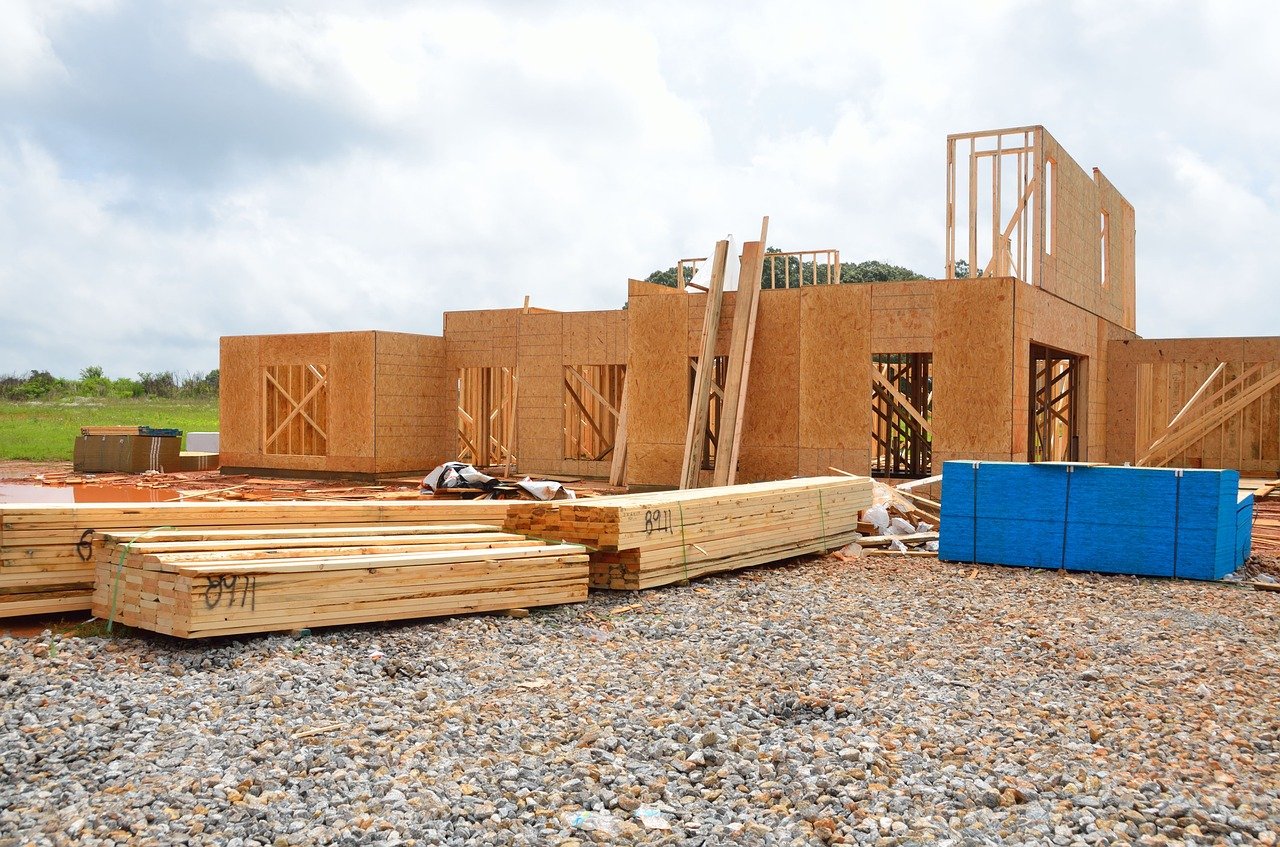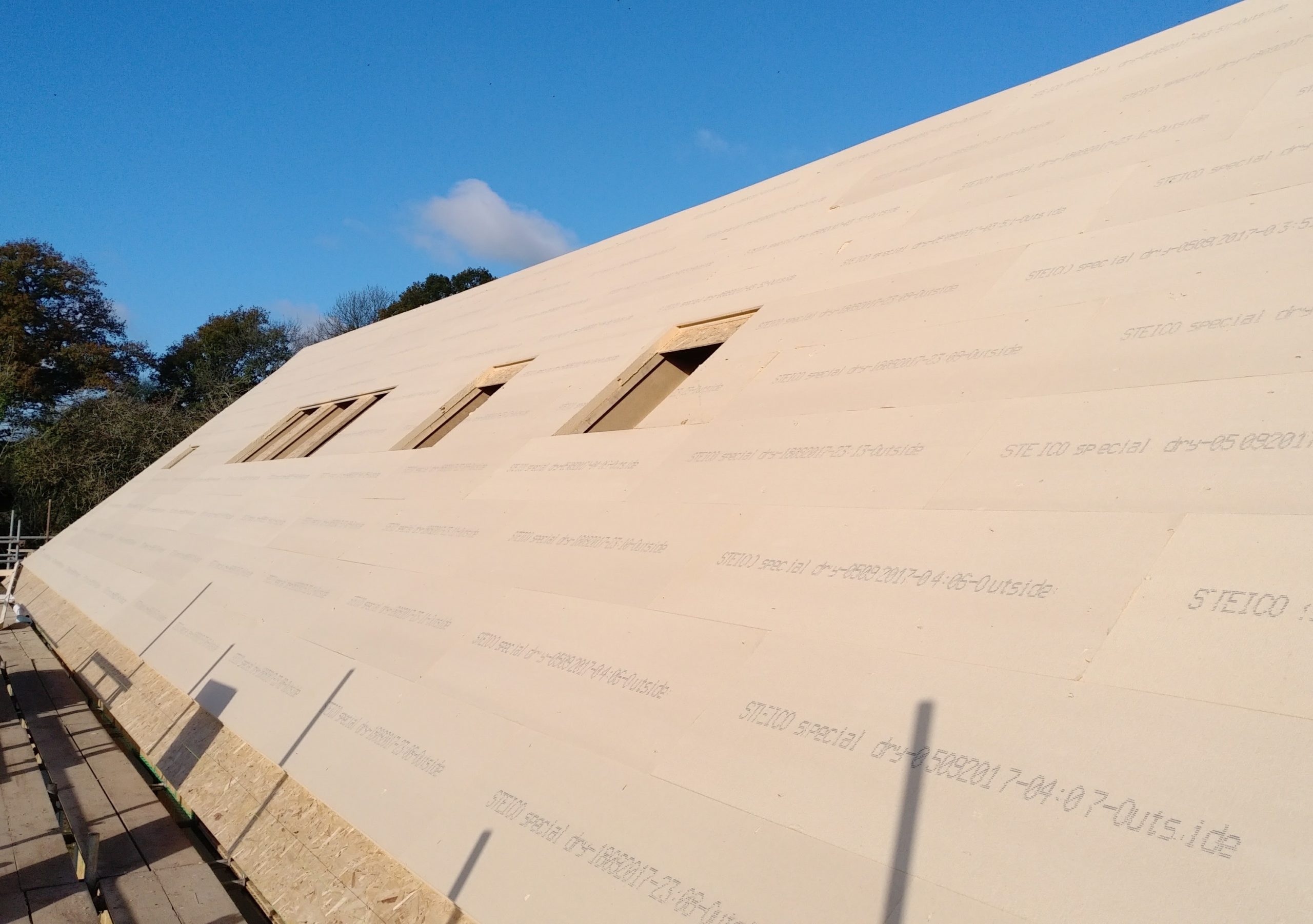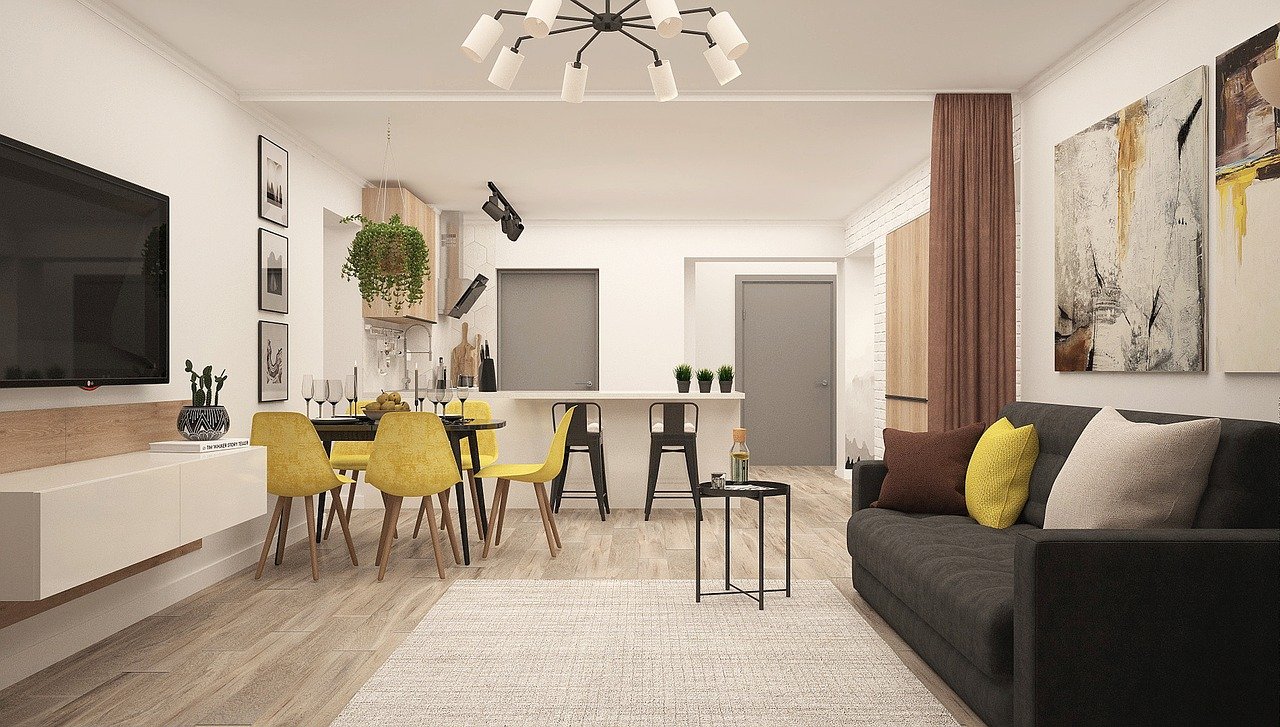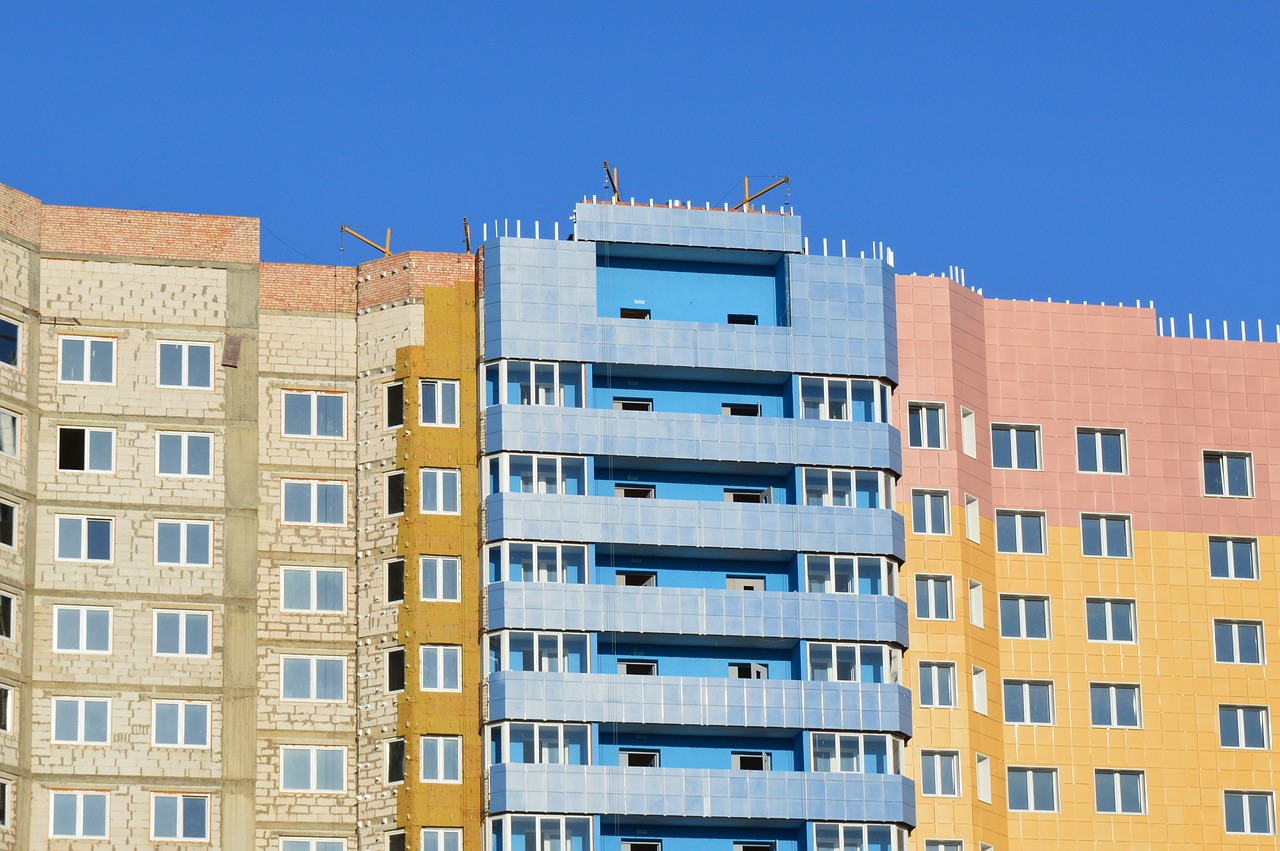WHAT IS SUSTAINABILITY?
The most commonly accepted definition of ‘Sustainability’ was made in 1987 when referring to future world development: ‘Sustainable development is ‘development that meets the needs of the present without compromising the ability of future generations to meet their own needs’. The concept of ‘Sustainability’ in practice is a broad church within which a number of social, economic and environmental issues are included.

The building industry is usually responsible for around 10% of the UK economy and so represents a significant impact on areas of sustainability. The industry’s key zones of accountability are: Global warming gases from the energy it uses; The quantity of material resources it extracts from the earth; The environmental damage caused by material extraction, processing and construction; And the damage to health caused throughout the extraction, manufacture, use and final disposal of building materials.
HOW DOES THE BUILDING INDUSTRY ACHIEVE HIGHER LEVELS OF SUSTAINABILITY?
The industry can be more sustainable by adopting better principles and practices in the way it designs and constructs buildings. The way we design and build using the principles of ‘Green Building ‘can make a significant contribution, not only to reducing our collective impact on the environment but also to our health and wellbeing in the places we work and the homes we live in.
But….
Like many other large industries, construction is very slow to change. Economically, the industry is notoriously volatile, so it’s no surprise that change is seldom welcome or implemented. Most change is legislation-led through the Building Regulations and industry-related initiatives such as BREEAM; but some change is thanks to individuals and companies taking responsibility for reducing their own environmental impacts.
SUSTAINABILITY, QUALITY AND SELF BUILD
The core of the construction industry is the ‘volume’ house-building sector. So critical is the role of the dozen or so companies that make up this group, that their economic role in the GDP (Gross Domestic Product), is regularly cited in economic reporting as the ‘weather vane’ of all industry. Key to their success is their efficiency of production. They buy materials and erect and sell homes on an industrial basis that maximises profits. That they manage to do this, whilst actually selling arguably poorly performing, indifferently constructed houses with abysmal space standards, is thanks to a well-oiled marketing machine that consistently succeeds at selling a premium on image, location and affordability. Notably, when the national economic output is bleak, so is that of the builders, who stop building until recovery. This chronic ‘boom and bust’ approach to housing is one of the reasons that the UK fails to meet the need for more homes.

In stark contrast to the anonymity and indifference of industry-produced housing, the self-build/custom build sector delivers for its members, well-built, well-performing, high quality and spacious homes. Increasingly their houses are made from materials and designs that put people, their health and their future at the centre of the process.
There are between 10 – 20,000 self-builds in the UK every year. This is less than 10-15% of all the homes built annually but may constitute as much as one-third of new detached homes – this compares with 60% in Germany and 80% in Austria where self-build is the norm.
Despite their number, self-builders have and continue to make significant contributions to advances in house design and technology. In particular, in recent years, they have been responsible for the dramatic uptake of ‘Green’ features such as renewable energy and low environmental impact building systems. Outside of the self-build market, these are features that take several years to filter through to commercial housing developments.
There is many a volume house builder who looks upon his self-build cousin with envy. Shorn of the profit motive, but instead equipped with a will to build exactly for his/her needs, the self-builder is at liberty to choose the type of construction and the materials that the building is made from. In particular, the self-builder is uniquely enabled to choose freely from the wealth of materials now appearing on the market that are not only of very high quality but also representative of a quickly growing market in the UK for ‘sustainable’ and healthy ‘Green’ products.
‘FABRIC FIRST’
As part of the UK government’s first initiative in 2006 to tackle climate change, it published a voluntary code requiring new homes to add renewable energy devices to the buildings. That it kicked off thousands of new businesses dealing in the installation of wind turbines, heat pumps and solar panels was probably no bad thing, but it was responsible for sending house builders off in the wrong direction.
Critics soon pointed out that the adding of energy-generating technology was usually doing not much more than covering for the poorly performing buildings they were attached to. The analogy to the policy was that of a leaking bucket of water: to keep the bucket full, it was necessary to keep pouring water into it – rather than fix the leaks themselves.
The code didn’t change and was eventually eclipsed and abandoned. Instead, building designers and developers worked towards design standards of their own adoption. The most well-known standard, imported from Germany, is the Passivhaus standard which ensures that the way a house is built will deliver a heating requirement of no more than 15 kWh/m2/yr. This very low figure is achieved by careful design and the building fabric alone. For many already built Passivhaus homes, their heating systems have become largely redundant.
This emerging (in the UK) methodology of designing buildings to reduce their energy usage through building technology rather than adding renewable energy systems is known as ‘Fabric first’.

Picture courtesy of Kithurst Builders Ltd. Passive standard family home in West Sussex built with natural materials. Roof sarking Steico Special Dry wood fibre insulation board.
CHARACTERISTICS OF A ‘FABRIC FIRST’ APPROACH:
- High performance and high quantities of insulation.
- Maximum levels of air-tightness.
- Use of heat given off by the occupants and their cooking and electronic devices to help the heat the spaces.
- Optimisation of natural ventilation.
- Optimisation of solar gain through appropriately located windows.
- Sometimes using the thermal mass of the building to absorb excess heat.
In addition to high degrees of energy efficiency, the ‘Fabric first’ method provides a comfortable environment that makes few demands of the building’s occupants. Where renewable technologies place the reliance on the occupier to operate the sometimes complicated controls, a well-built energy efficient building has already done all the work for them.
WHAT TO LOOK FOR WHEN CHOOSING ‘GREEN’ BUILDING MATERIALS
‘Green’ building materials are products that have a lesser environmental impact than other materials that might be used for the same ‘job’ in the building. Apart from environmental preferences, Green materials are also usually associated with high levels of performance and safe user-friendliness.
Of course, not all the building materials we employ have significant damaging effects on the environment. Those that do vary from severe to mild and to sort one from the other it’s useful to consult the GreenSpec website which provides information about the environmental impacts of materials at www.greenspec.co.uk
There are usually plenty of alternatives, but the golden rule is to ensure that the products eventually selected can do the job demanded of them in a way equal to or better than materials they’re replacing.
It is notoriously difficult to clearly identify materials with a lesser overall environmental impact. Experts can take a lot of time in examining and assessing the potentially wide range of environmental properties contained within even a single building product.
However, when specifying an appropriate product or material, these are some of the key low impact and beneficial aspects to look for:
- Products that perform well and are easy to build with
- Materials made from renewable crops such as timber, wool or hemp.
- Products manufactured from abundant resources such as lime, clay or rock.
- Products which minimise the use of fossil-fuel energy in the manufacturing process (embodied carbon).
- Materials which, as a part of their function, improve a building’s energy efficiency.
- Manufacturing processes that don’t pollute.
- Materials that are safe to use and dispose of or recycle.
- Products containing recycled materials.
THE HEALTHY HOME

Whether it be sleeping, eating, relaxing or working, we spend most of our day inhabiting our homes. Because of that time in a familiar space, we become adept at managing its environment. We are familiar with controlling lighting, heating and ventilation through simply throwing a switch or opening a window. Though the technologies have changed, the basic control actions are as they have been for generations.
Though the basic provision of light and warmth is unchanged, the contents of the air we breathe has altered over the last 50 years. We could now be dealing with a raft of possible toxins that if not sufficiently designed and built to avoid, could lead to serious health issues. Perhaps not surprisingly, these changes have been brought about through the way we build and the materials we use.
The principal drivers behind the need to improve the efficiency of our homes began with the oil crisis in the 1970s since when we have set out to reduce our dependence on fossil fuels. In the last decade, climate change has been added to the agenda. The combination of the two has had an aggrandising effect on building regulations and the techniques we use to design and build.
For our homes, the two main methods of addressing energy conservation are insulation and airtightness. We are used to using insulation in our walls and roofs, but now house builders have to learn the techniques of sealing openings in the building fabric to prevent warm air leaking out.
The result of sealing buildings could be that for many of us opening a window or just relying on the leaky nature of our buildings might not be enough to deal with the smelly, oxygen-depleted or damp air caused by everyday living.
Air contamination from materials we use in our homes is relatively new and owes its occurrence to the growth of synthetic materials. Ordinary products such as paints, floor finishes, timber-laminates, furniture, synthetic textiles, plastics and foams can emit a chemical cocktail including volatile organic compounds (VOC’s) like formaldehyde, xylene, isobutylaldehyde, and organochlorides, aldehydes and phenols. Emissions from materials are known as ‘off-gassing’ and can result in higher, more toxic concentrations without suitable ventilation.
Sadly the most familiar aspect of an unhealthy building, damp caused by condensation, continues to blight modern housing. Most buildings show the effects of condensation to some degree – from water appearing on the glass of cold windows through to damaging mould found on walls and ceilings.
Asthma linked to inhabiting in these unhealthy conditions is on the increase, caused by damp and mould, house dust mites and chemicals in carpets and flooring materials.
The direct solution to damp air is adequate ventilation, but there is also a technique of building that has gained traction in recent years. The ‘Breathing wall’ is one that uses ‘hydroscopic’ materials and membranes together to allow moisture to pass from the interior through the wall to the outside air.
SUMMING-UP, IMPROVING INDOOR AIR QUALITY (IAQ) IS ACHIEVED BY:
- Designing a ventilation strategy that can include simply opening windows through to providing mechanical ventilation. Above all, whatever strategy is chosen, it is vital that it is easy to understand and operate by the user.
- Considering the use of ‘breathing walls’ that help migrate internal dampness through to the outside.
- Avoiding materials that are suspected of off-gassing toxins.
- Thinking holistically about combining techniques of reducing humidity and pollution and toxins – adding up to a whole that is more effective than the sum of its parts.
- Using Green building materials from suppliers like Ecomerchant.
… and not forgetting the potential of indoor plants to absorb toxins and carbon dioxide
TOP TIPS FOR GOING GREEN
Whether planning to build new from scratch or refurbishing, this is the time to incorporate sustainability into your project through design and the careful choice of materials; Getting it right will insulate you against spiralling energy bills, provide a durable long-lasting healthy home and leave a lighter footprint on the earth.
The building industry generally acknowledges that self-builders build better quality buildings; In building their own homes, they are often keen to explore proven and beneficial systems that would not necessarily be part of a developer or volume house builder’s package.

Picture courtesy of Baumit renders and plasters
SO WHAT ARE THE KEY ASPECTS OF BUILDING TO GREEN STANDARDS?
- Using enough insulation – most buildings are built with too little
The more insulation you incorporate into the walls, roofs and floors of your home, the more heat it will retain. Insulation is probably the main element to get right at the start, so it’s important to ensure the appropriate materials are used in the right way and in sufficient quantity. - Design-in airtightness and ventilation – ‘Build tight, ventilate right’
Fewer gaps in your home’s structural envelope mean less heat lost. Good air tightness maximises the efficiency of the insulation and reduces fuel bills. With airtightness, ventilation is essential and needs careful design. Ventilation can be passive, mechanical or both. - Use the buildings thermal mass to best effect
The idea of thermal-mass is difficult to understand for most of us – so it’s wise to get advice before using it. Materials such as stone, brick, terracotta and concrete can provide ‘thermal mass’. Used with care, it can help moderate the internal environment throughout the day by absorbing excess heat from the sun or other sources and then releasing the heat back into the interior during darkness. - Design for overheating.
Increasingly hot summers are a climate feature we all need to design for. Use wood fibre insulation, particularly in rooms in the roof, but also in walls to slow down heat transfer from the outside. Think about using shading for windows exposed to the sun in summer, but make sure they’re not shaded in winter. - Make the best use of natural light
Maximising the amount of natural light in your home reduces the need for artificial lighting. Windows are an essential element of the building’s performance. Modern windows can be very efficient with whole window U values as low as 0.8W/m2K. ‘Solar gain’ can help heat the home. - Choose Green materials
Green materials have a range of features and benefits not usually present in synthetic materials; A majority are less polluting, safer and recyclable. Most too can significantly out-perform synthetic oil-based products in aspects that are becoming more important as the UK warms-up. - Structural systems – choose your system early in the design process
Most construction techniques can be adapted to meet high levels of energy efficiency, but some lend themselves more immediately to hitting the highest standards. This is where you will come across the expression ‘Fabric first ‘where the building contributes significantly to overall energy efficiency.
Some of the most popular systems for self-builders are:
- Timber frame with timber, brick or render cladding
- Monolithic clay blocks and render
- Brick and block cavity walling
- Cross-laminated timber (CLT) and cladding
- Deploy renewable technologies only after your shell design is complete
Self-builders have led the way in terms of adopting renewable technologies to best effect, the golden rule here is to design the building to do the work, then match your energy needs to that level.

Written by Sandy Patience & Will Kirkman: Sandy is an architect, journalist and speaker. He is the editor of GreenSpec at www.greenspec.co.uk – a site dedicated to delivering information about the design and building of Green Buildings. Will is a co-owner of Ecomerchant www.ecomerchant.co.uk (a sustainable builder’s merchant), writer and speaker and has been involved in promoting green construction for over 25 years.
